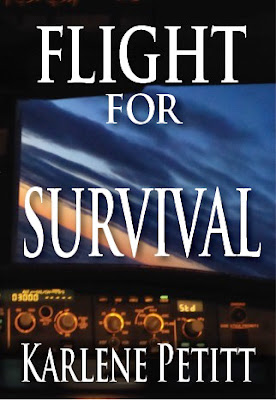From the Early Years Forward...
The early years of aviation saw many safety challenges resulting in
regulatory change due to economics, more so than safety; yet, eventually
the FAA became a dual gatekeeper of safety and economic protection
(Adamski & Doyle, 2010; Gesell & Dempsey, 2011). The aviation
industry expanded quickly and aircraft crashes were due, in part, to
under-developed technology, the inability to avoid weather, and a
paucity of ground support systems (Perrow, 1999).
Early aircraft were
unsteady, demanded continuous pilot input, and required unyielding
attention due to unreliable external cues for navigation (Mosier, 2010).
Aircraft technology evolved, and human factors specialists worked with
engineering and flight crews to reduce cockpit workload. In the early
1970s CRM became the first regulatory mandate to deal with crew
interpersonal and communication issues (Helmreich, Merritt, &
Wilhelm, 1999).
Crew Resource Management (CRM)
Crew resource management (originally termed cockpit resource management) was a movement to teach crewmembers interpersonal and communication skills in effort to reduce pilot error. CRM was not a one-time fix, but a process that evolved over five developmental generations during the 1990s—theory; teamwork emphasis; team expansion; AQP; and TEM (Helmreich, et. al., 1999).
One of the greatest challenges with CRM was to convince pilots that they needed to improve their
communication skills (Helmreich, et. al., 1999). However, once
leadership understood that errors were unavoidable, but could be
mitigated, corporate support was gained (Broyhill & Freiwald, 2012).
CRM was mandated, and programs were developed and subsequently forced
upon flight crews. Despite resistance from some, CRM took hold and
became the way flight crews operated—CRM became embedded in airline
culture (Broyhill & Freiwald, 2012; Helmreich, et. al., 1999;
Valazquez & Bier, 2015). When CRM moved into simulator training in
the form of AQP, operational training combined with interpersonal
communication practice ensued.
Advanced Qualification Program (AQP)
AQP provided airlines an economic benefit by granting
training departments the ability to reduce training footprints with a
train-to-proficiency concept (FAA, 2006), notably reducing training
expense. At the same time, airlines were required to track crew
performance to ascertain training effectiveness, yet managers were
perplexed how to accomplish this task (Nemeth, 2015). AQP also required
the inclusion of CRM training, line oriented flight training (LOFT),
and line operational evaluation (LOE) scenarios (FAA, 2006).
These
training/checking scenarios changed traditional processes where a pilot
was trained and checked on individual performance, to training and
checking crew-based performance (Helmreich, et. al., 1999).
Line-oriented training processes not only enabled crews to learn how to
manage the aircraft, but also worked toward improving team and
communication skills. With the availability of highly reliable
automated aircraft, designed to reduce workload and improve situation
awareness (SA), training departments could achieve results quicker than
ever before. CRM opened the door to exceptional communication, where
crewmember briefings began with, “Today the threats are…”
Threat and Error Management (TEM)
TEM, the essence of fifth generation CRM, was developed to
assist pilots with identifying operational threats in order to mitigate
risk (Helmreich, Klinect, & Wilhelm, 2001; Mathew &Thomas,
2004). TEM began the bold shift from the reactive safety strategy of
CRM, to a proactive strategy where the pilots assessed their environment
(inside and out of the flight deck), and openly discussed potential threats (Helmreich, et. al., 1999). Accepting that errors would occur, and identifying areas of potential threat, created awareness and assisted pilots in not only anticipating those threats, but prepared them mentally for the unexpected event (Helmreich, et. al., 1999; Merkt, 2010). Trained observers subsequently joined pilots in the line environment to observe behavior.
References available upon request!
Enjoy the Journey!!
XO Karlene





























